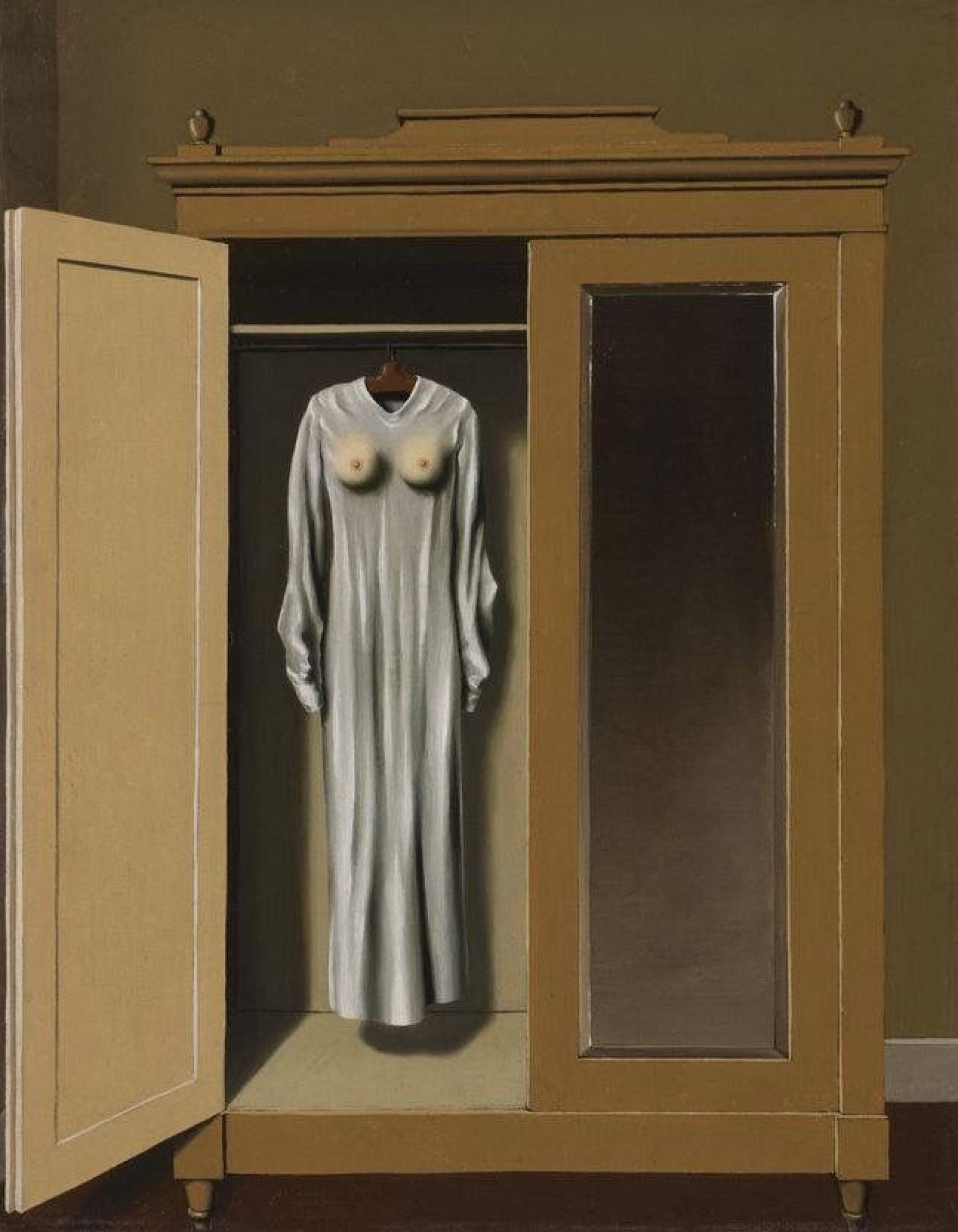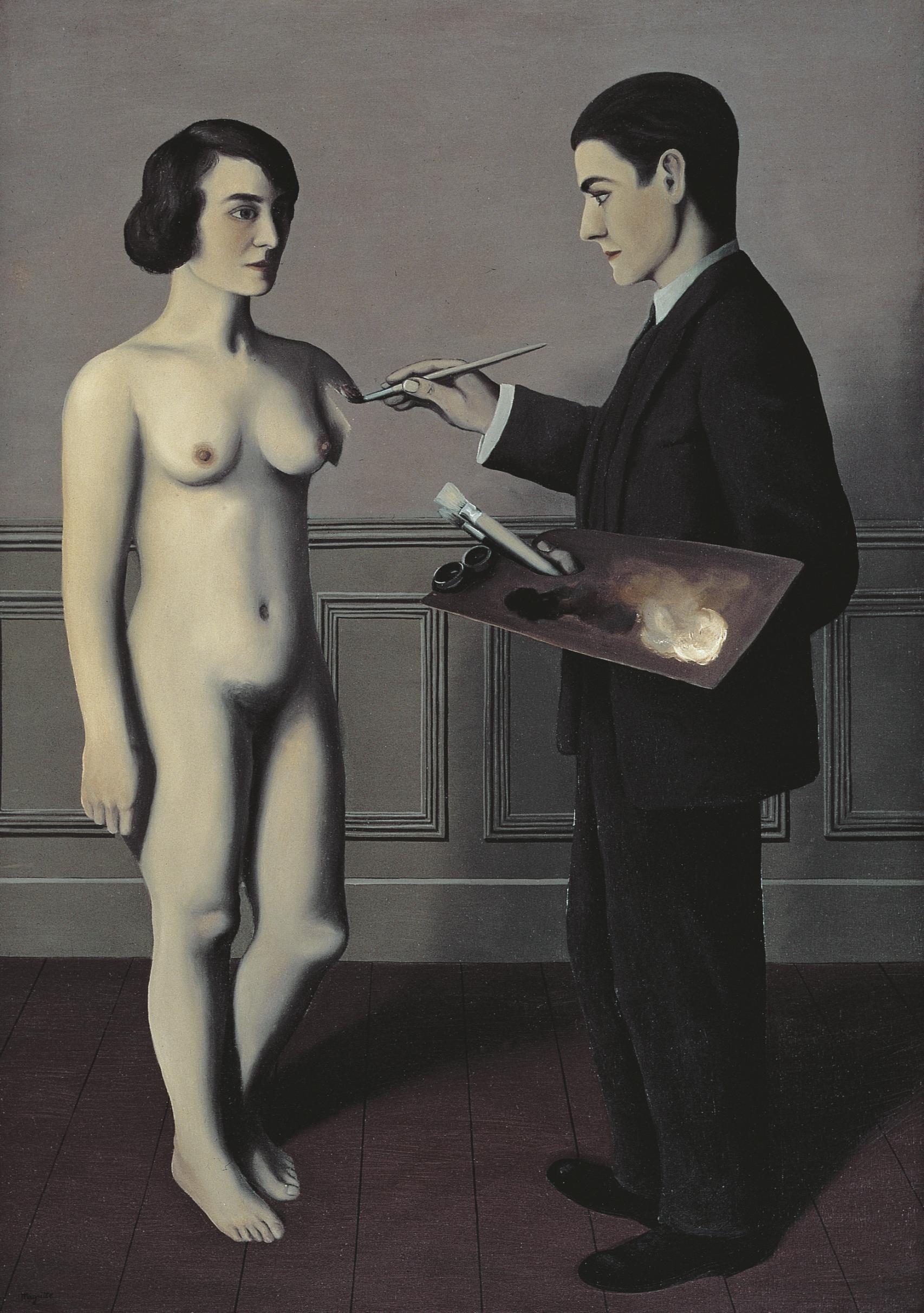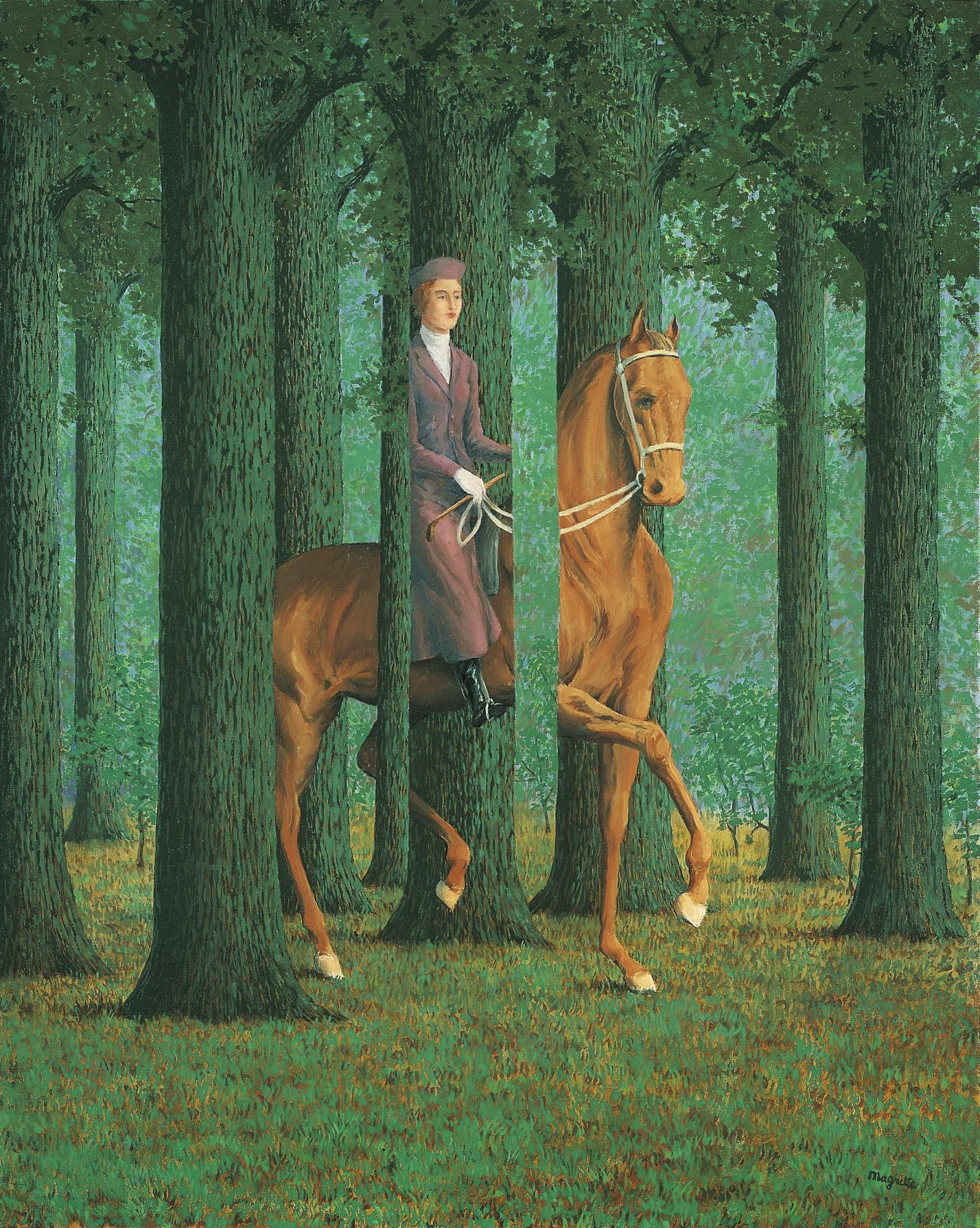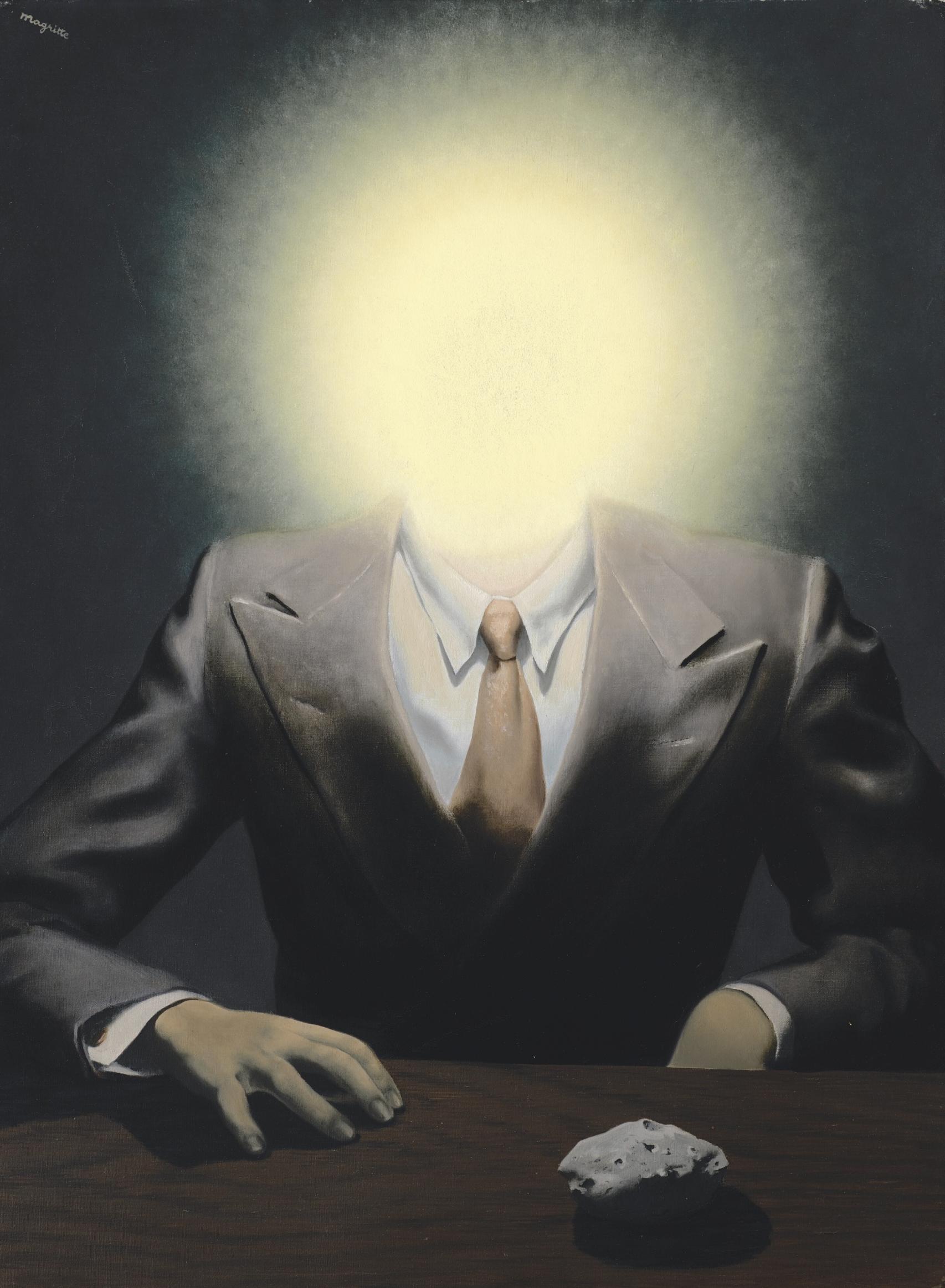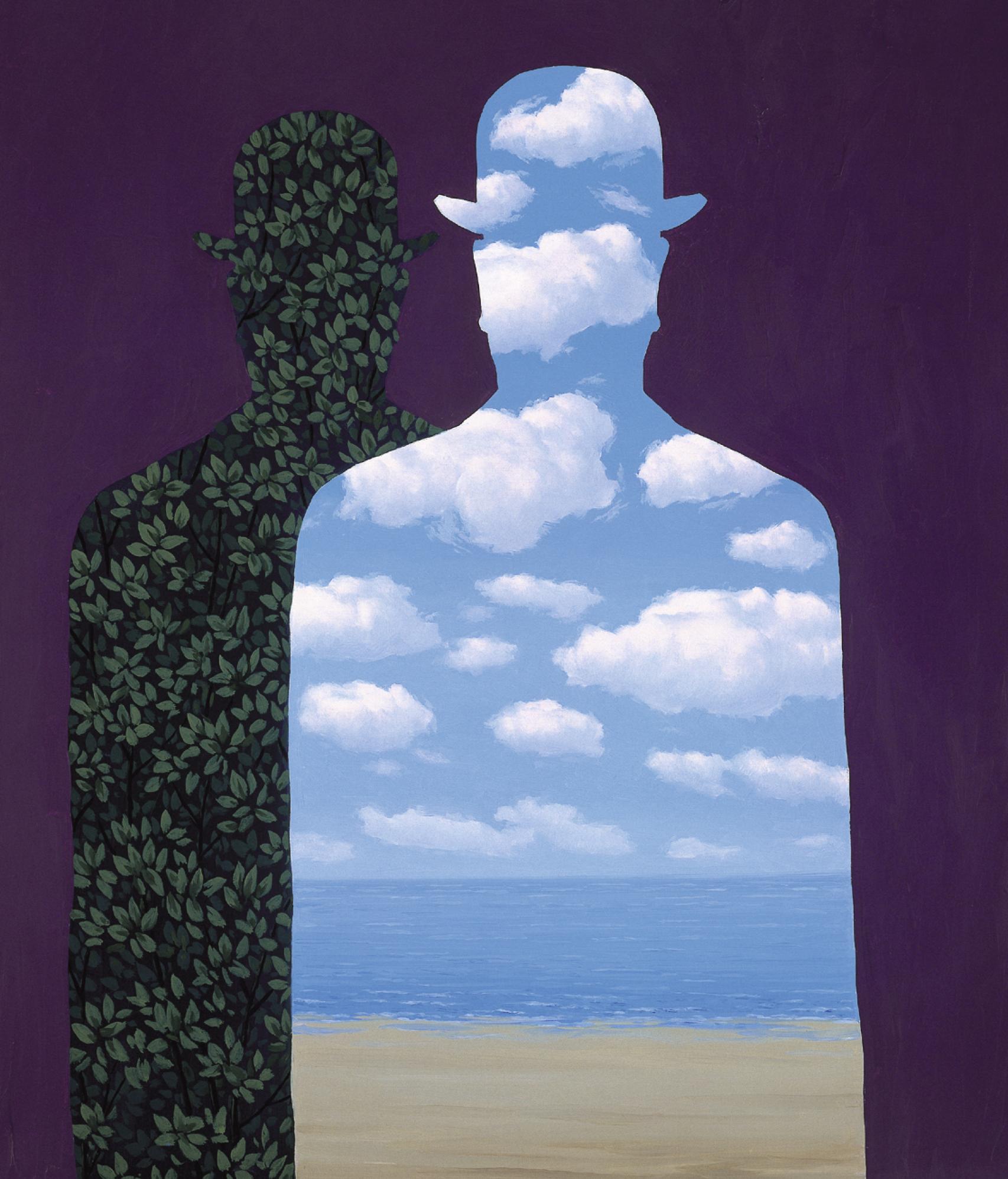The equivalents to the Goya Awards are called Magritte Awards in Belgium. Beyond the tribute to the suggestive images of the country’s surrealist painter, perhaps the choice of the name of the awards also implies a recognition of the cinematographic resonances that may exist in his work, despite the essential stillness of most of his paintings.
The Magritte Awards are awarded by the Delvaux Academy, which is not named after the Belgian surrealist painter. Paul Delvaux, contemporary and highly influenced by René Magritte, but in memory of the filmmaker André Delvaux (One night, a train), who was not related to the artist, but who also had an obsession with the railroad. The Thyssen Museum dedicated in 2015 a wonderful exhibition to Paul Delvaux, so that with this one that he now dedicates to Magritte, he completes a diptych on the two greatest Belgian painters of the 20th century.
René Magritte (1898-1967) was very fond of cinema since he was a child, silent films, and the characters (Arsenio Lupine, Fantômas…) from criminal novels and popular series, from which he extracted so many ideas (masks, masks…). the ones he humorously imitated in histrionic poses. There is in Magritte a comic histrionics as there is also, as in so many painters, a serious playing and joking.
‘In memoriam Mack Sennett’, by René Magritte.
Among the almost one hundred works that can be seen in the extraordinary exhibition The Magritte machine, curated by Guillermo Solana -Very well ordered and with unmissable information panels-, there is an impressive oil painting from 1936 entitled In memoriam Mack Sennett: a long white feminine nightgown or tunic hangs from the front and inert from a hanger inside a wardrobe, showing – despite the fact that the fabric should cover them – a woman’s breasts, which gives us the impression of being in front of a dead woman and hung up.
We already know that we cannot trust the beautiful titles —poetic, literary, philosophical, conceptual… – that Magritte gave to his paintings, titles that mislead, contradict the painting or make our eyes think – as the artist wanted – and our heads. , almost or without almost as if we had to solve a visual puzzle, but, where we are going, the title of this canvas names Mack Sennett, the king of the wacky silent film comedy known as slapstick, so far from the image that we contemplate.
Do not miss any titles of Magritte’s paintings. Nor any of the words that sometimes accompany painted objects, since they never correspond to what they are.
“Attempt of the impossible”
We were going to the movies. On the first floor of the museum we can see some Super-8 movies that Magritte, as an adult, took to filming doing silly things with his illustrious friends. And with Georgette Berger (1901-1986), his wife and life and playmate. They met as children, got lost, met again, and married in 1922, so they were together for forty-five years. And Georgette was, of course, clothed and, above all, nude, her model.
In the first of the seven sections of the exhibition, The powers of the magician —Magritte, magician, master of tricks and deception—, we can see a splendid painting (Attempt of the impossible, 1928), in which the self-portrayed artist — in a suit and tie, did not play the bizarre-looking genialoid bohemian at all —, palette in hand and standing, paints Georgette, also standing.
‘Tentative of the impossible’, by René Magritte.
Toyota Municipal Museum of Art, Toyota. Courtesy Ludion Publishers.
But he does not paint her – he still needs to complete an arm – on a canvas, but in or on the very air of the room, so that the corporeity of the woman is – and that happens with anything painted – a mere optical illusion. Magic, if you will. For that reason, and derived, the famous pipe of yore is not a pipe, but the image of a pipe.
Magritte, as his friend Luis BunuelHe hated psychoanalysis and asked for comments, but not interpretations, for his paintings. He made it clear. His work and, to a certain extent, his life have not stopped being interpreted in the light of psychoanalysis due to a crucial biographical event: the tragic death of his mother. Was Georgette, returned from her childhood, the surrogate for her dead mother?
Magritte’s father was a fierce and shameless guy, to summarize. His mother, Régina, committed suicide by throwing herself into a river when the future artist was thirteen years old. His corpse appeared weeks later in the waters with the nightgown covering his face and head. There is the key to everything! The divan interpreters shouted. Magritte always rejected and hated this interpretation. But…
Hats, cloths, faces
Hats, cloths or sheets that cover heads, objects that interfere with the vision of faces are three constants in Magritte’s work. The mother was a milliner. Enough? The last of the class knows Magritte’s bowler hats, the men with bowler hats that Magritte painted so many times – he used to repeat himself a lot, he made variants of the same motifs or ideas – to the point of becoming his most iconic image, taken up a thousand times by the design and advertising —in which he himself worked—, extended to popular culture: it is even said (and it is written and studied) that the appearance of the calamitous and friendly policemen Hernández and Fernández, created by the Belgian Hergé for your comics of Tintin comes from Magritte.
Not in the exhibition are the famous The son of man (1964) —with a green apple in front of his face— nor Golconda (1953), with the rain of men in black and with bowler hats over the city. But don’t panic, there are several paintings of men in bowler hats in the exhibition. Even of men with bowler hats silhouetted and hollowed out — as Magritte so often did — so that, through them, you can see something else, the sea, for example.
‘The blank signature’, by René Magritte.
National Gallery of Art, Washington
One of the several great things about this exhibition is that, sufficiently fulfilling what the knowledgeable visitor expects to see, reveals many unforeseeable worksIn addition, in a journey that, like good novels and good films, is getting bigger and bigger, becoming thicker and more rounded.
Cloths or sheets, there are also some of that, covering heads and, above all, bodies in what appear to be coffers. And there are also coffins, two “funny” pictures of coffins —even sitting and reclining anthropomorphically— that replace, in a composition of exact imitation, the characters of two well-known paintings by David and Manet, Madame Récamier and The balcony, respectively.
They have something of homage, a macabre joke and a reminder of the transience of life: death. Magritte said: “Against the general pessimism, I support the pursuit of joy and pleasure.” And you can see it. But there has to be everything.
Those that are not, however, in this textile section are the pictures of lovers covered in sheets –Lovers (1928), same -, cited by Pedro Almodovar in a scene from Broken Embraces (2009).
De Chirico and metaphysics
It does not seem, let us admit it, that the frequent tendency to hide faces, through the interference of an object, or of a mask or other pictorial motive, can be derived from the vision of the covered face of the dead mother. Whatever the motivation for this resource, the result is a certain dehumanization of the human figure, which undoubtedly transmits with the face and the eyes (the look) what is human. Or, if you prefer, the result is a greater extension of the spirit, linked to a feeling of confinement, emptiness and anguish.
People with no faces in sight, or their backs, or replaced by an explosion of light (The pleasure principle, 1937) end up denying the body or producing an impression of isolation or inhuman loneliness. Magritte’s surrealist militancy, with his comings and goings – also in his friendship with the members of the group and in his relations with the Communist Party – is a fact, but if many of his paintings were labeled metaphysical the qualifier would not clash.
‘The pleasure principle’, by René Magritte.
Sotheby’s
Many surrealists were seduced and abducted by the painting of the Italian metaphysician Giorgio de Chirico (1888-1978), whom later, above all André Breton and Paul ÉluardIn one of those inquisitorial practices so typical of the movement, they would be shelved because they considered that it had deviated from its principles. De Chirico’s painting that ignited Magritte’s creative springs was The love song (1914).
With Breton, Magritte had several quarrels and estrangements. Once they got angry, according to Buñuel in his memoirs (My last breath), because Breton, during a dinner, was very annoying, censuring Georgette wearing a pendant with a little cross. Magritte and his wife argued with Breton and left.
Magritte, however, attended the conference which, under the title of What is surrealism?, Breton gave in Brussels in 1934 and then illustrated the cover of an edition of the text read with a first version of his painting Rape (1945), which will be seen when the exhibition travels to CaixaForum in Barcelona in February.
The otherworldly order
Candles, hands, words, apples, eggs, bowlers, birds, skies, clouds, the sea, trees, leaves, doors, balusters, boats, pictures (pictures within pictures), curtains, spheres, fire, bells, moons, houses , boxes, stones and bottles are some of the motifs that are repeated the most in Magritte’s canvases.
They are grouped or coincide, so many times, in a capricious way, changing their natural sizes, interfering, creating impossible scenarios of a certain theatricality. Magritte messes up the world to create a different and unexpected order on a different scale. An order that is no longer that of the world that others see, but the order of another world: his.
‘High society’, by René Magritte.
Telefónica Foundation
The English Novelist Julian Barnes He is also an excellent art commentator. In his book With the eyes open (Anagrama) dedicates a mini-essay to the Belgian painter; Magritte: a bird in an egg. Alludes to his painting Elective Affinities (1933), in which we can see a large egg inside a cage. The birds and the eggs have a relationship, of course, but this barter or game of substitutions, key in Magritte’s painting, is something to think about. On another canvas Clairvoyance (1936), the painter portrays himself painting a bird on a canvas that rests on an easel, but his gaze is directed to a table where the motif he is painting is located: an egg.
I copy, condense and remake in my own way, to qualify Magritte, some of the adjectives and judgments that Barnes displays in his text: controlling, inexpressive, repetitive, parodic, systematic, witty, provocative, concentrated, restrictive, cold, silent, terrifying, personal, imitable, poetic, disturbing, conceptual, playful, funny, far-fetched, literary … If there are contradictions in this relationship, it is because there are in René Magritte’s painting. This is the rose.
Follow the topics that interest you
Reference-www.elespanol.com
